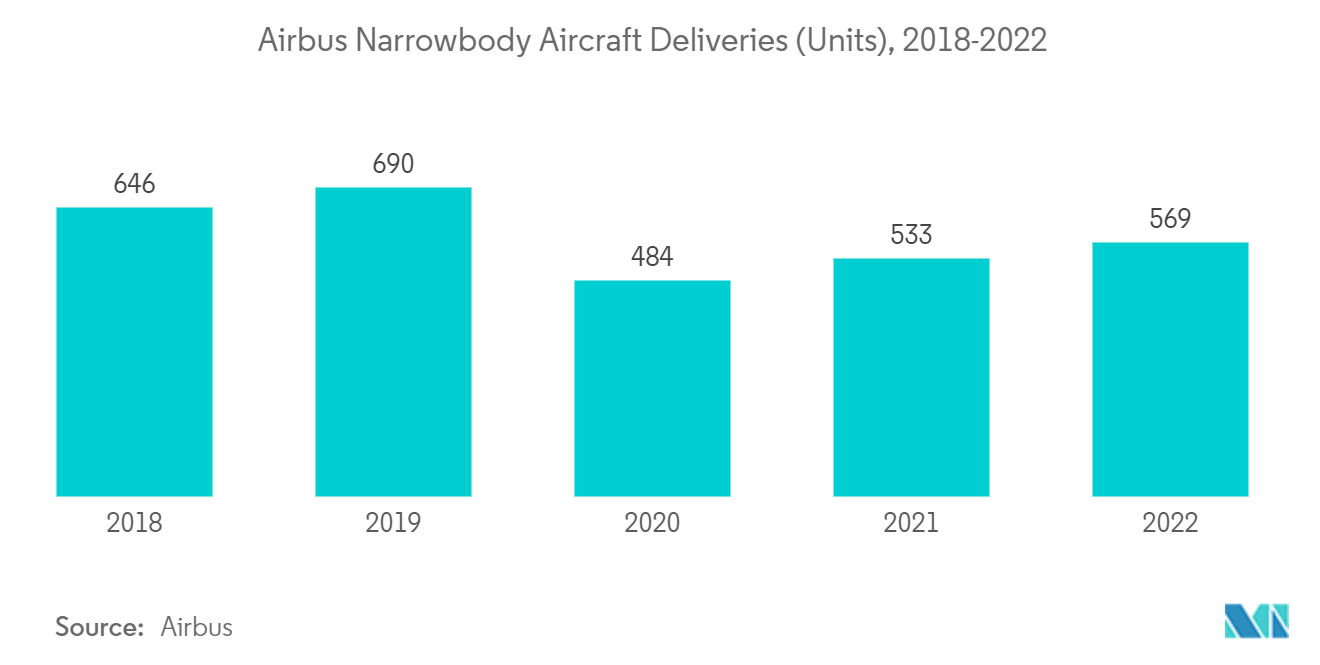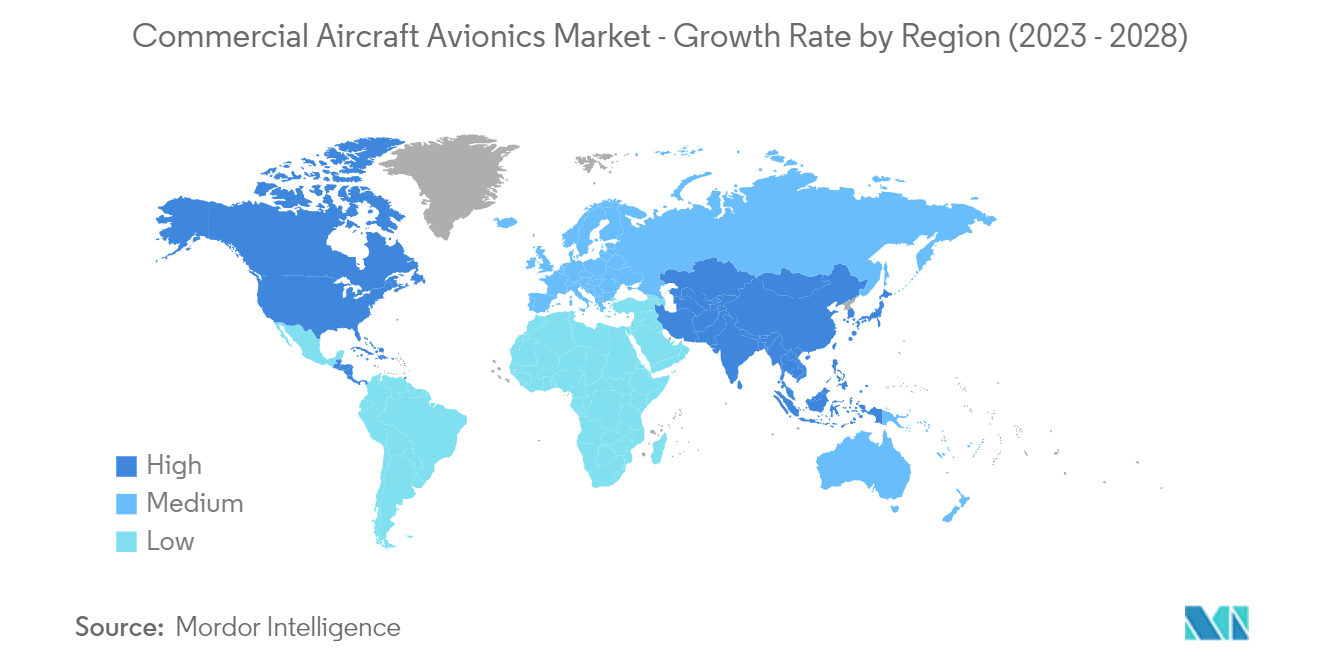Market Trends of Commercial Aircraft Avionics Industry
Narrowbody Segment to Dominate the Market During the Forecast Period
- The narrowbody segment dominated the commercial aircraft avionics market. The demand for such aircraft is anticipated to increase as most low-cost carriers (LCCs) are trying to modernize their existing fleets to exploit new market opportunities and match the competencies of successive aircraft versions. Airbus, a commercial aircraft manufacturer, delivered 661 commercial aircraft in 2022, up from 609 in 2021. Also, Boeing delivered 480 commercial aircraft in 2022.
- For instance, in December 2021, Air France-KLM announced an order for 100 Airbus A320 neo family aircraft, along with options for an additional 60 planes. The order consists of a mix of A320 neo and A321 neo aircraft, with the first deliveries expected in the second half of 2023. On the other hand, though the B737 MAX fiasco has hampered the market prospects for The Boeing Company, the successful recertification from the FAA has started driving back the demand for B737 MAX aircraft. Several airlines have started resuming operations on the 737 MAX jets and ordering new 737 MAX aircraft.
- For instance, in January 2022, Boeing announced that it had won a major order from Qatar Airways for 25 737 Max 10 jets, along with options to buy 25 more aircraft. The airline also signed an order for 34 of the upcoming 777X, as well as options for 16 more jets. Companies like GE Aviation, Collins Aerospace, L3Harris Technologies Inc., Honewywell International Inc., and Cobham PLC provide avionic components for the Boeing 737 and 777 families of aircraft. The quicker recovery of domestic air passenger traffic is also anticipated to rake in new orders for the narrowbody aircraft, which may drive the growth prospects of avionics systems providers associated with the narrowbody programs.

North America Held Highest Shares in the Market
- The aerospace industry in the region is mature and strongly supported by a robust aviation base. Higher air traffic has resulted in the procurement of several aircraft by regional and international airline operators. Boeing, one of the major aircraft original equipment manufacturers (OEMs) based in the United States, generates a huge demand for avionics systems.
- Factors such as the availability of raw materials, political stability, and low production costs have driven the establishment of new aerospace manufacturing facilities in the region. Also, fluctuations in aviation fuel prices have triggered a surge in demand for fuel-efficient new-generation aircraft in North America. Hence, aircraft OEMs have started increasing their production capabilities to cope with the ever-increasing demand.
- Airbus announced that it would increase the production rate of the A220 aircraft to around six per month in early 2022. It aims to increase the A220 production rate to 14 by 2025, i.e., 10 aircraft produced each month at its Mirabel facility and four at Mobile. Four United States-based customers, namely JetBlue, Delta Air Lines, Breeze Airways, and Air Lease Corporation, constitute more than half of the backlog of the A220 program. Raytheon Technologies Corporation provides a majority of avionics subsystems integrated into the A220, including onboard computers, weather mapping radar, and electronic flight instrument systems. Other airlines in the region are also looking for post-pandemic growth.
- For instance, in December 2022, United Airlines announced its largest widebody aircraft order by a US carrier in commercial aviation history, for 100 new 787 Dreamliners plus options to add 100 more. With this order, the airline is now expecting new deliveries of 700 new narrowbody and widebody aircraft by 2032, on an average of 2 aircraft per week in 2023 and 3 aircraft per week in 2024. Such developments render a positive outlook for the market in North America during the forecast period.


